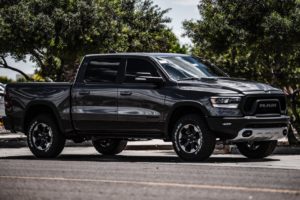 You might be under the impression that lowering and lifting vehicles is just for trick cars, lowriders, and off-road trucks but you’d be sorely mistaken.
You might be under the impression that lowering and lifting vehicles is just for trick cars, lowriders, and off-road trucks but you’d be sorely mistaken.
There are many drivers out there who simply would like to lift or lower their cars for aesthetic purposes or just to improve a vehicle’s daily performance. If you’re looking to adjust your car’s distance from the road beneath it, then don’t worry.
If you’re considering lowering or lifting your car or truck, you’ve come to the right place. Practically any vehicle can go higher or lower, from convertibles to minivans.
Continue reading and we’ll walk you through everything you need to know.
Spring Adjustments
Flexibility is important for cars and trucks so that they can properly handle road conditions as well as withstand turning and stopping.
When springs are placed between the frame and the wheel, they allow for movement. They also come at set heights from the vehicle’s manufacturer as part of the car’s suspension system.
An easy and popular way to lower a vehicle is to adjust the spring placement or length.
You can replace your existing factory springs with drop springs that are sold by auto parts suppliers.
Some car owners instead opt to cut the manufacturers’ coil suspension springs. This can lead to the springs becoming weaker or even fail, however.
Shortcuts like these can end up costing the driver more money over time since it can throw the car’s alignment off balance. This will, in turn, cause wear and tear on supporting parts like the undercarriage, tires, and frame.
Manufactured drop springs are a safer option because they’re designed to fit the correct ratios for a vehicle’s specifications.
Most drop springs are fairly affordable and cost under $50. Of course, you can buy higher-end drop springs that will cost you several hundred dollars.
Air Suspension
Imagine that you have an inflatable flotation ring. When it loses air, the ring is more pliable and it’s easier for you to drag it through the water.
But when it’s full of air, it’s more buoyant and floats on top of the water. When you drag it along, it bumps with the motion of the water’s waves.
Having an air ride suspension will help your car float in a similar manner. By filling or releasing the air pressure in your car’s suspension system, the buoyancy makes a gentle drop and lift with the turns in the road.
Flexible, heavy canisters or bags release and hold the air in place of springs. They lower and lift the car or truck to adjust to the performance needs or changing conditions of the street.
A good amount of lowriders utilize air suspension bags for dramatic or slow rises and drops. These setups can end up costing the driver thousands of dollars.
Air systems are cheaper than hydraulic ones but they’re still going to cost you close to $1,000.
Hydraulic Suspension
Many people prefer hydraulic systems since they can lower their car while also have the flexibility to tackle changing weather conditions, speed bumps, and steep inclines.
This kind of system is extremely versatile since it allows the driver to be the one to control the car’s height. And with a fluid pressure system, they’re able to move the height in quick bursts.
Although an air suspension system accomplishes the same thing, the fluid suspension action in the hydraulic system is considered to be much faster.
Custom Low
Although there are guidelines outlines how low you can take your car depending on the type of vehicle it is, some car owners love to figure out ways to push a machine all the way to its limits.
There are infinite combinations of custom systems and kits for lowering cars. There are many car owners out there who simply start with a kit and an idea and end up with a totally unique solution.
Many custom car shops have become famous for how they lower their own cars and truck as well as those of their customers.
There are also weekend mechanics who take their cars to international lowrider competitions because of their skills at customizing, innovating, and combining.
Practically all cars can be lowered, from Cadillacs to Volvos. And it’s always fun to see how different people do it.
Torsion Tweak
The torsion bars in trucks are there to help absorb impact. These bars are affixed to the body of the vehicle at a certain height on one end. But they twist and constrict on the movement of a control ar that levers down and up.
It’s thanks to movable bolts that this vertical arm is attached to the torsion bar.
You can actually raise the bar and have the truck or car sit higher by tightening these bolts manually or with torsion keys or other such tools.
This can be hard to picture because the “torsion bar” isn’t an actual rod that moves up and down. Instead, think of more like squeezing the water out of a wet towel.
Twisting the towel makes it tighter while untwisting it relaxes it.
You can lift the car with a few quick turns of the torsion bar. But getting that height to be balanced is key.
The Importance of Knowing how to Lower and Lift Your Car or Truck
By knowing the proper ways to lower and lift your car or truck, you can accomplish things you may have never thought possible before.
And when you finally do get your vehicle to that desired height, it’s important that you take care of it. Check out the rest of our site for helpful articles and important vehicle manuals!